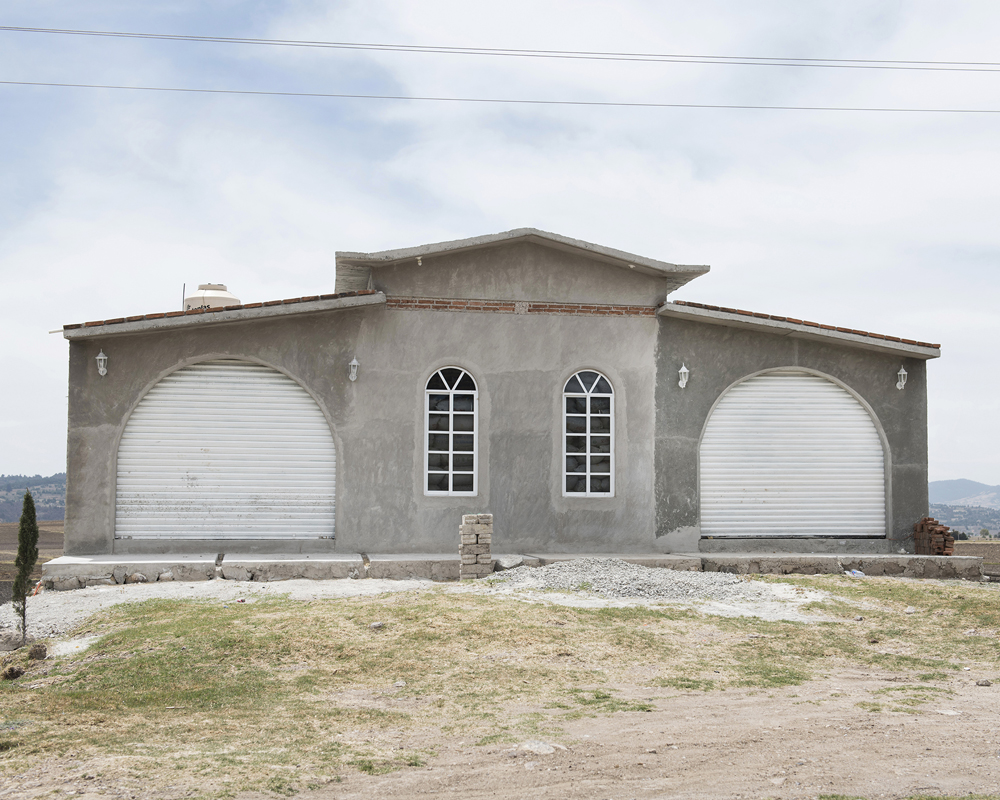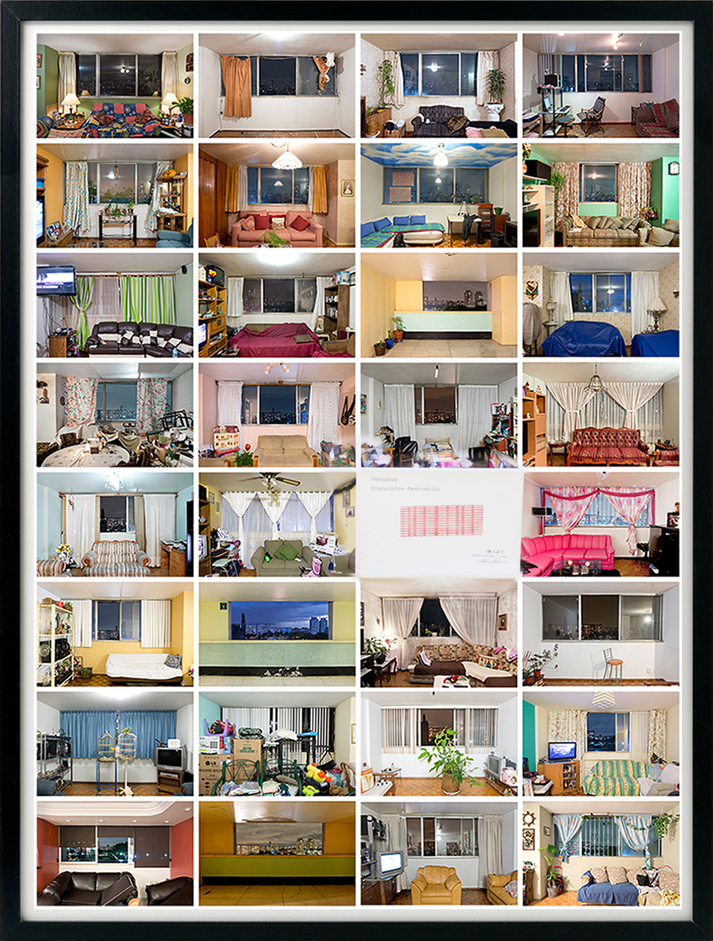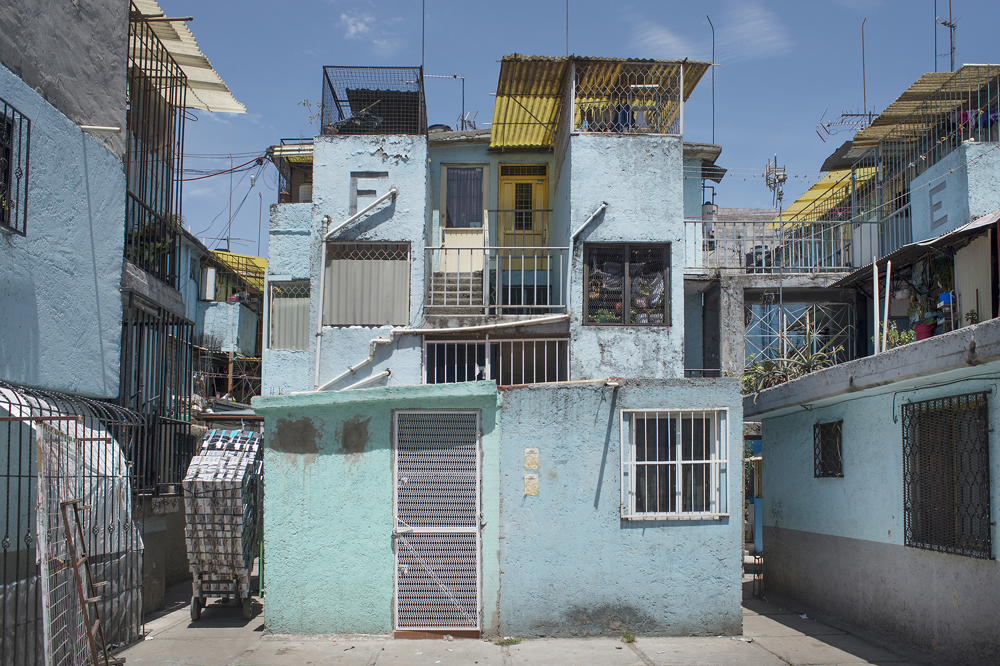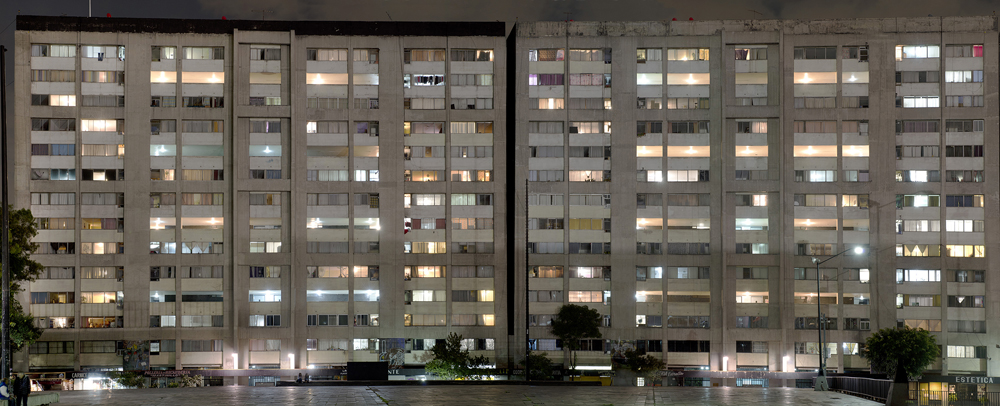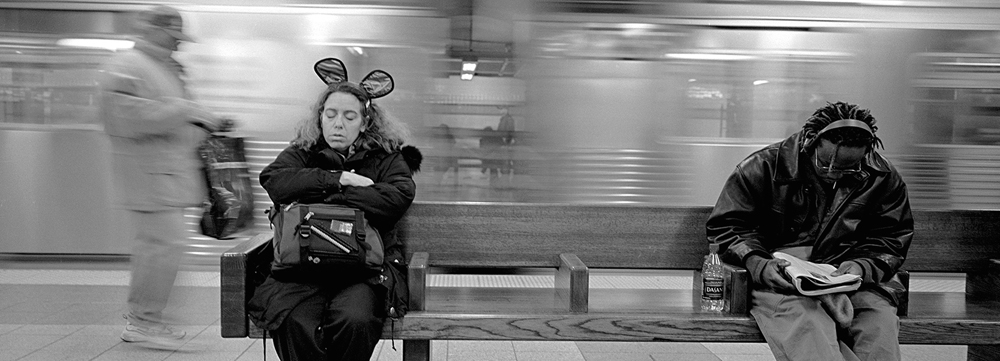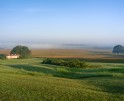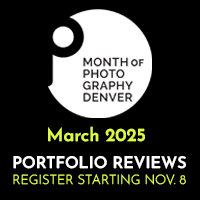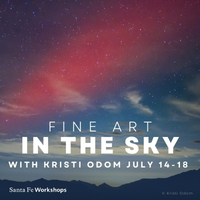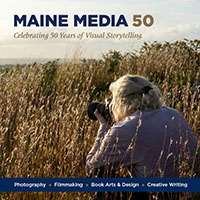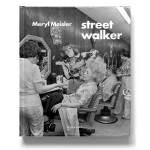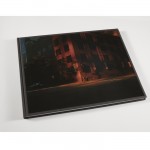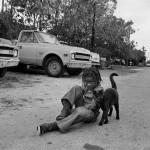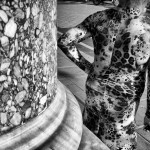Mexico Week: Adam Wiseman

©Adam Wiseman, Casa Catillo, from Free Architecture (Arquitectura libre)/Courtesy of the Patricia Conde Galeria
One of the pleasures of attending the FotoFest 2018 Biennial Meeting Place Reviews was meeting reviewers from around the globe who journied to Houston to celebrate and appreciate photography. I am so grateful to gallerist Patricia Conde Juaristi, of the Patricia Conde Galeria in Mexico City, Mexico for sharing a week of Mexican photographers with the Lenscratch readers. The gallery has specialized in contemporary photography since 2009, and is currently the only Mexican gallery focused on promoting various photographic practices. Today she shares the work of Adam Wiseman – Aline Smithson
I am a freelance artist and photographer who works within the context of both the editorial assignment world and the arts.
Rooted in what I learned at the International Center of Photography in NY and as a darkroom printer at the Magnum Photo Agency (also in NY) my personal work challenges the traditional format of documentary photography primarily the idea of pursuing objectivity with an intrinsically subjective medium. My recent projects Moving Portraits (2013), Moving Stills (2015), Tlatelolco Disproved (2014) and Free Architecture (2017-ongoing) are examples of how the processes can be integrated into the final presentation of a project to create an honest representation through subjectivity and transparency. – Adam Wiseman
About his exhibition, What Happens, by Iván Ruiz:
What happens in a place where nothing seems to be happening? Dead space. Differences fade away. Everything seems to be the same when spaces and bodies blend in indifference. Faces seem unconcerned unless somebody –a voyeur– stares and captures a feature that bestows a singular quality on them . Over twenty years, Adam Wiseman (Mexico City, 1970) has had a clandestine, yet frontal glance out of the corner of his eye towards faces and spaces around Mexico. He had the same glance where he first trained himself as a photographer. During his stay in the United States –nourished by his work as printer at the renowned Magnum Photos agency – Wiseman’s work evolved from a documental approach into a field focused on the problems of photography as a medium in a broad sense. In his Subway series (1998-2001), Wiseman draws on a hidden camera to unsettle the idea of subjects posing for a portrait.
Sixteen years later, the Moving Portraits Revolution series revisits the idea-of-subjects-posing through a clever trick that reformulates not only the relationship between the photographer and the subject, but also the relationship between a still image and a moving image. Tlatelolco Debunked (Tlatelolco desmentido) is a nodal point in the artist’s career to the extent that he carefully designed a collective action so that the population living in that housing development would become part not only of a remembrance, but also of a revision that embraced both the modernist drive of Mario Pani’s architectural utopia, as well as the massacre of students in 1968. The project Free Architecture (Arquitectura libre), which Wiseman began in 2016 and is still under way, evokes Robert Frank’s iconic work The Americans developed between 1955 and 1956. If in the mid- twentieth century, undertaking a journey to gather a documental account of his travels in the United States, Frank’s work revealed a physical and social landscape of the United States, still rough, unfinished, and somehow disjointed, sixty years later, Wiseman has traced a sort of architectural geography in which a different landscape in that country is rendered visible. It is the landscape of materialized dreams by dint of imagination, but also of the ways immigrants living in the United States use their remittances to do so.
As a whole, this retrospective shows the development of an artist interested in cultural processes that span people’s geographical transitions, how architectural movements move from one imagining to another, as well as urban and collective memories in a process of re-adaptation.

©Adam Wiseman, Mansion Concreto Domo Azul, from Free Architecture (Arquitectura libre)/Courtesy of the Patricia Conde Galeria
Born in 1970, Adam Wiseman’s work is characterized by its clean and minimalist view towards the concept of urban. His lens adopts the “dead pan” aesthetics questioning the proportions and dimensions of the space in an exceptional way.
His editorial and personal work are inseparable; The main characters of his photography are people, traffic, buildings, billboards and the city movement. Specifically, the raw material of his work is everyday life.
Wiseman’s work has been published in magazines such as Le Monde, Paris Match, The New York Times, T Magazine, Rolling Stone, Time Magazine, The Telegraph Magazine and National Geographic, as well as in newspapers The New York Times, The Wall Street Journal, The Observer Magazine and The Guardian.
Recently, his work has become an exploration of the documentary photographic language, and the changes that it currently experiments focusing on challenging the formal structure of documentary, achieving objectivity by adding the processes as part of the final product. Thus achieving objectivity through intersubjectivity.
Wiseman’s photography has been exhibited in Spain, the United States, France, Japan, Mexico, Argentina, Venezuela and Switzerland, and is part of the Schöepflin Stiftung Collection in Germany; The permanent collection of the Smithsonian Institute in Washington D.C; The Museum of Fine Arts Houston; 9/11 Memorial in New York; The World Bank, Mexico; The Coppel Collection, Mexico; Colección Banamex, Mexico; And The Museum of Fine Arts Houston, Texas.
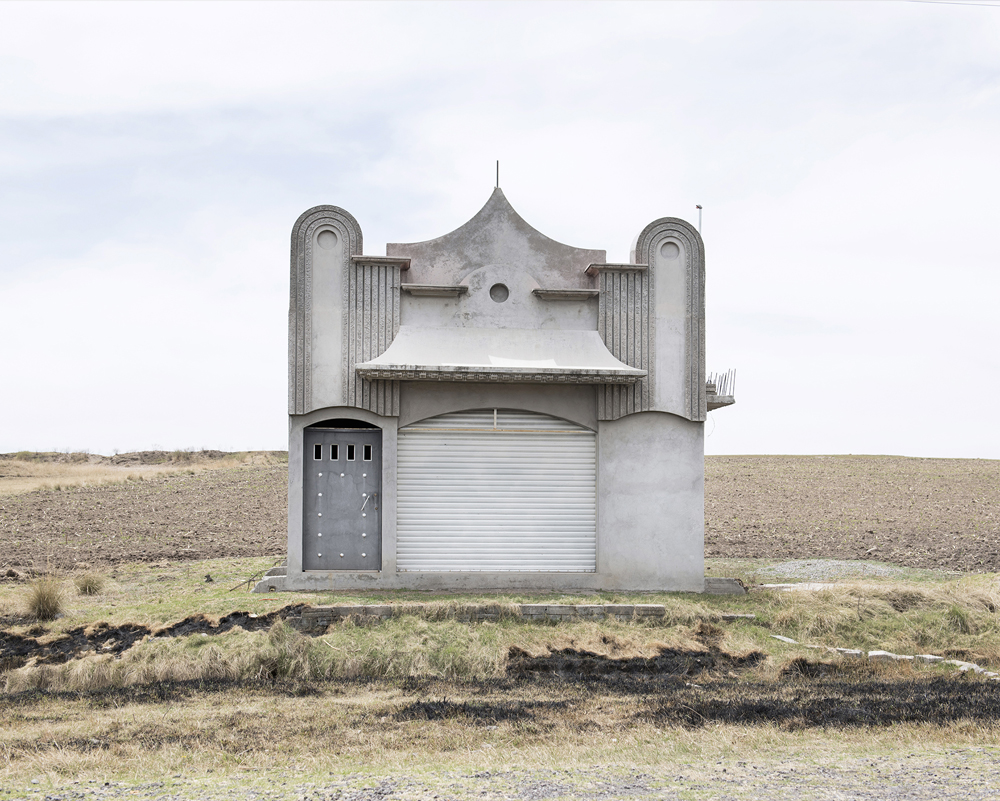
©Adam Wiseman, Casa Chino Deco, from Free Architecture (Arquitectura libre)/Courtesy of the Patricia Conde Galeria
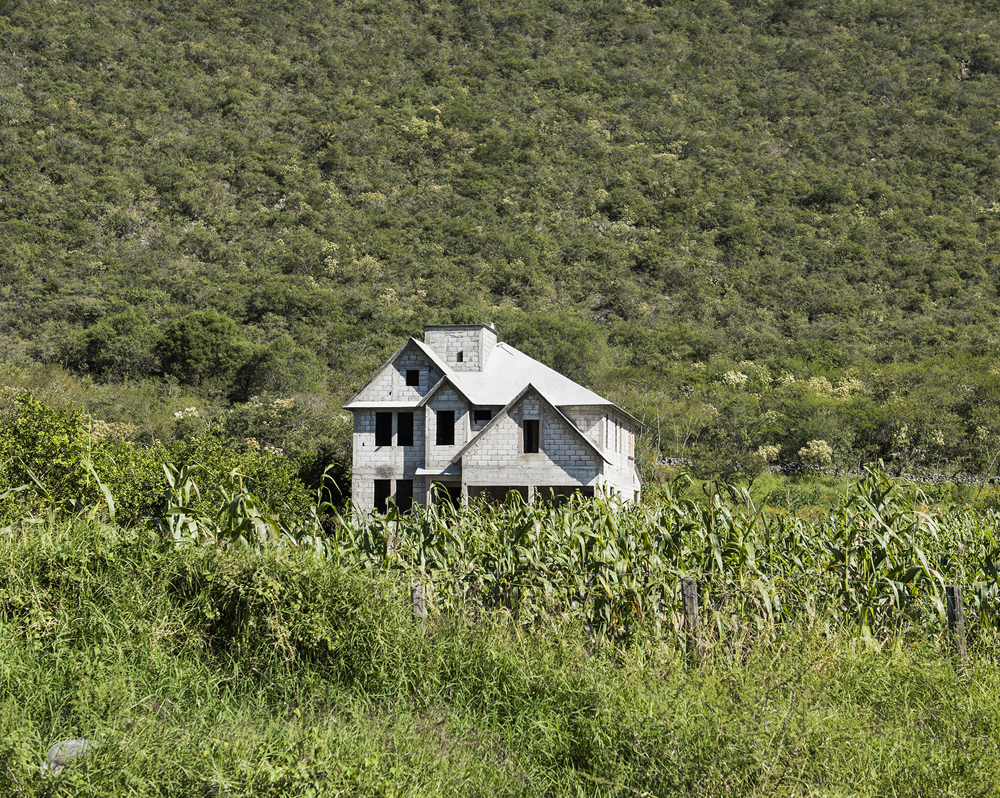
©Adam Wiseman, Casa Gris Milpa Verde, from Free Architecture (Arquitectura libre)/Courtesy of the Patricia Conde Galeria

©Adam Wiseman, Iglesia Bola, from Free Architecture (Arquitectura libre)/Courtesy of the Patricia Conde Galeria

©Adam Wiseman, Mansion Rosa, from Free Architecture (Arquitectura libre)/Courtesy of the Patricia Conde Galeria
Posts on Lenscratch may not be reproduced without the permission of the Lenscratch staff and the photographer.
Recommended
-
Marco Yat Chun Chan: Dollar Landscape and Savannah TreesSeptember 24th, 2024
-
Meryl Meisler: Street WalkerSeptember 14th, 2024
-
Photographers on Photographers: Kiên Hoàng in Conversation with Jamie Maxtone – GrahamAugust 15th, 2024
-
Michael Young: Maybe TomorrowJune 26th, 2024
-
CENTER BLUE EARTH FISCAL SPONSORSHIP: MARK LEONGMay 27th, 2024

